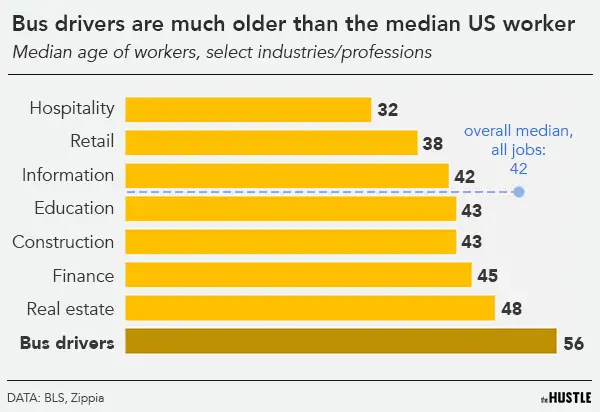Using a conservative estimate of 35% annual driver turnover & cost per driver between $5,000.00 to $10,000.00 for recruitment alone, gives a fleet of 500 vehicles annual recruiting costs between $875 thousand to $1.75 million with negligible impact on retention. This is a reality for the industry as a whole.
Commercial Drivers
- As older drivers retire in greater numbers, the industry faces a driver shortage.
- Existing incentives are found not unattractive to a younger workforce.
- The year’s long labor shortfall was masked during the pandemic as volume plummeted.
- It has been reported that many in the industry are saying higher pay is not enough.

Challenges for Companies
- Where are the driver candidates?
- What firms in your state require these jobs?
- What differentiates your firm from all others that require the same driver candidate?
- What is the benefit that can be provided the driver candidate at your firm versus all others?
Commercial Driver Shortage (Following feedback was obtained through active involvement of The National Association of Locum Tenens (www.tnalt.org)).
The skills gap is also recognized in non technology oriented jobs as represented in the growing shortage of commercial drivers. Chief Executive Officer (CEO) participation produced varied opinions relative to the commercial driver shortage including the following (limited) list.
1) CEO’s like the incentive of an education scholarship to be provided their workforce (including drivers), and welcome the concept of provisioning an incentive to a driver (where warranted) of a scholarship credit for a family member,
3) Education is the cornerstone to executive professional development, and essential to career development for all commercial drivers. Mentorship is required to insure alignment of education, and job goals,
4) Driver quality of life is key to a productive employee and well warranted to insure a productive driver,
5) CEO’s support greater driver accommodations including virtual campus settings to pursue their education requirements,
6) CEO’s support development of cross-industry “Regional Proving Grounds for Collaborative Research & Development” specific to Special Needs School Bus transportation.
